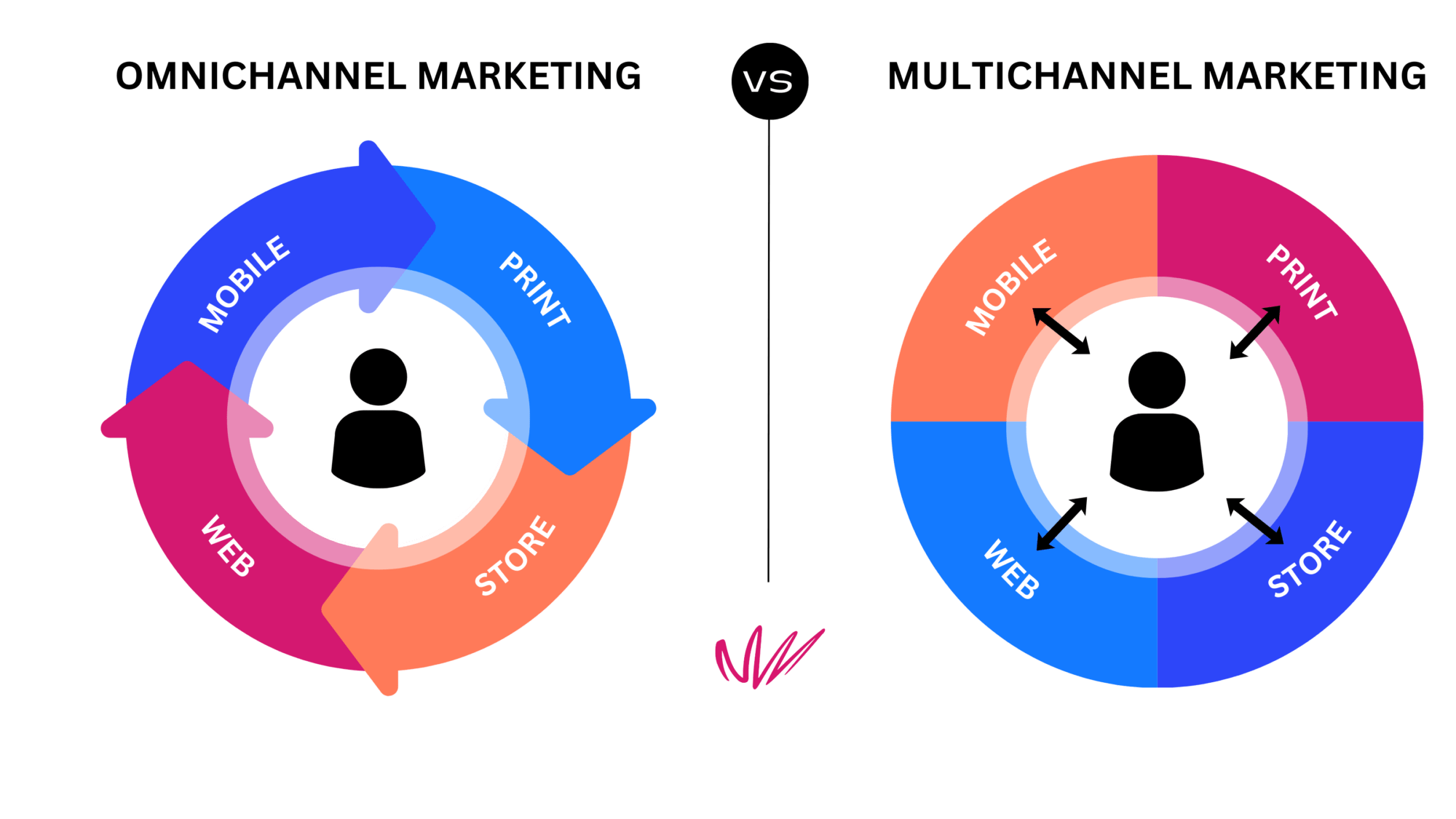The digital age of marketing is here to stay, which means that understanding and optimizing your time to market strategy is more imperative to your organization’s success than ever before.
No, this isn’t your typical scare-tactic; there are many more elements that build an effective strategy beyond picking the right means of execution. However, smart marketers are ones that take the time to understand consumer needs, utilize the right tools to connect them to the right audience, and perhaps most importantly, execute across channels to seal the deal. Now that I have your attention, let’s jump right in!
Defining Omnichannel and Multichannel Marketing
- Omnichannel marketing utilizes engagement data across all media channels. With this approach, channel engagement and behavioral trait data is collected to drive the first-party data segmentation or third-party data creation of target audiences.
- Multichannel marketing uses audience creation data that is sourced independently by each product or channel. While quantitative first-party and third-party segmentation data may be enlisted, each channel activates independent of the other.

Fundamental Differences
Omnichannel marketing takes a customer-centric approach while using engagement data across all available media channels to build an audience. Multichannel, on the other hand, takes a product-centric approach with data that is distilled against attributes sourced from single-channel engagement.
“I liken the differences to attending an orchestra performance; before the conductor takes the stage, woodwind and string players tune their instruments and the resulting chaos of noise is rather unpleasant. Once the conductor takes the podium with direction and purpose, the synergistic sound engulfs the theater.”
Prioritizing Integration, Adaptability, and a Seamless Customer-Buying Journey
Now that we’ve established the differences in how omnichannel and multichannel marketing audiences are sourced, let’s explore why you should care. Spoiler! This one is important. Multichannel marketing campaigns are often birthed from divisional vacuums. In the cases where companies are acquired, experiencing delays in scalable integration, or are simply practicing old habits of enlisting stagnant CRM data — these practices are not easily put to rest.
Left unchecked, multichannel marketing adversely fosters replicated content that deploys offers to duplicate individuals. The result? Diminishing brand impact, product confusion, reduced customer engagement, and ultimate disruption to what should have been a seamless customer-buying journey.
If at this point you’re thinking, “Wow! I never knew multichannel marketing was so one-dimensional”…then we’re making good progress.
Transitioning from a Multichannel to Omnichannel Approach
Don’t throw the baby out with the bathwater. What has been employed until now doesn’t have to be fully dismissed until your team is ready to sunset old procedures. Until that time comes, here are some items you should consider when making a pivot towards omnichannel marketing:
Decide upon a central marketing automation platform where divisional customer records will live alongside historical transaction data.
Ensure that each record is regularly and properly maintained, allowing for fluid enrichment of your segmented audiences.
Optimize your time to market efficiencies in order to generate appointments, drive Statement of Work requests, and convert prospects to fans.
Omnichannel Marketing in Action
With a transition plan in place, it’s time we address your most burning question as a marketer: “What is my return on investment?”
In a world where the digital landscape constantly evolves, mastering your marketing strategy is not just a matter of choice, but a necessity for thriving in today’s competitive market. Embracing an omnichannel approach isn’t merely about diversifying your channels; it’s about understanding and catering to the dynamic needs of your audience across every touchpoint.
For more information on how GrayHair Xcelerate enables marketers like yourself to take a synergistic approach to omnichannel marketing, CLICK HERE.

Written by: Mike Allario, Xcelerate Solutions Leader
Get To Know the Author:
In his role of Xcelerate Solutions Leader at GrayHair Software, Mike represents solutions that help bridge GrayHair’s go-to-market objectives. Rooted in a customer-centric discovery approach, Mike’s experiences span the entire customer-journey, first learned at organizations in the television and media measurement spaces and now expanding to the marketing services sector. In his free time, Mike enjoys screenwriting and producing films as well as spending time with his wife and three daughters.
